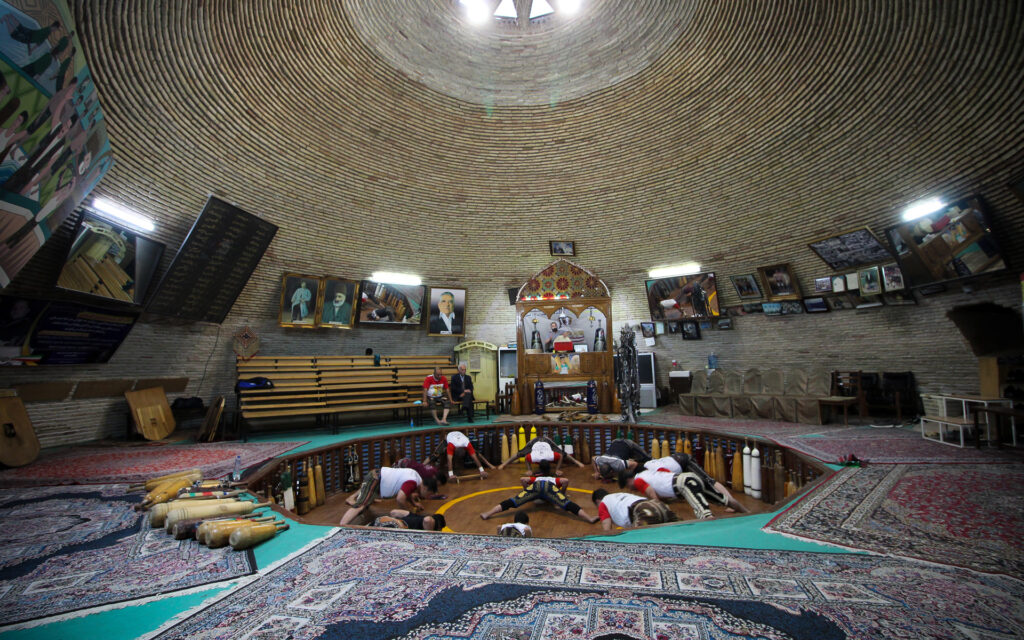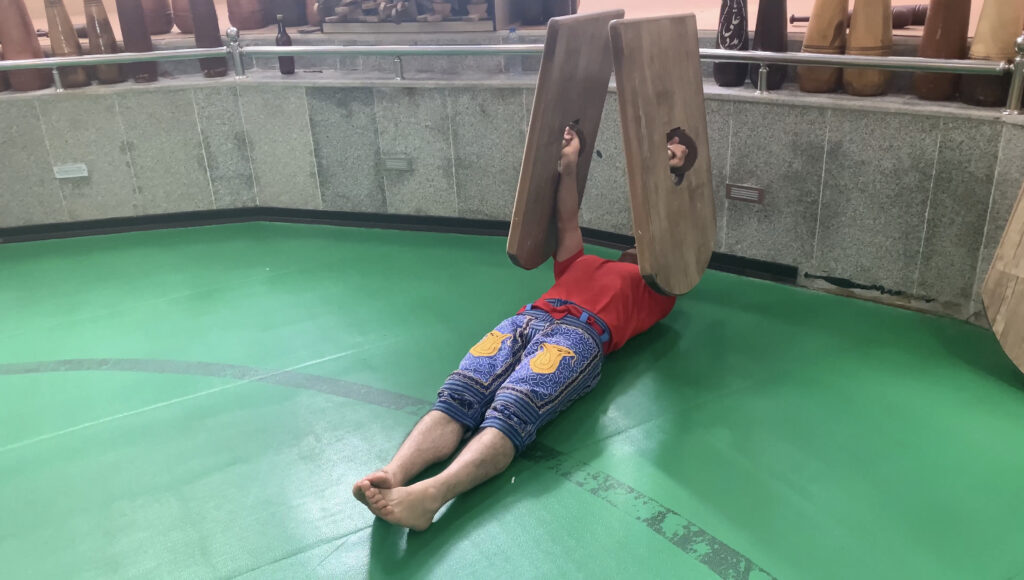
A taxte-ye šeno, or shena board, is a push up board used in the zurxāne in Iran. It is a critical tool and used more than any other. It is also an incredibly easy and inexpensive piece of equipment to make.
Here is the video on YouTube and the step-by step guide on how to make a taxte-ye šeno is below:
All you will need to make the shena board is thick scrap wood parts of various sizes, nails and basic tools – saw, hammer, sandpaper at a minimum.
The top board is 39 inches long, by 2.5 wide. It should be around 1 inch deep. take some 1 inch thick wood and cut out the length and width you need. Then sand the sharp edges and smooth out the wood with sandpaper.
The feet are trapezoidal. They should be between 1.5 and 2 inches across. The top of the trapezoid is the same width as the board – 2.5 inches – while the bottom should be 5.5 inches across for stable footing. plan out the cuts on the first foot and cut it. Then use the first foot as a template for the second. sand off the edges and make sure the top edge is level so it can be attached to the board.
Now you need to attach the top to the feet of the taxte-ye šeno. You can glue it in place first if you like and drill pilot holes, but the only necessary step is to hammer nails through the top. You can then use a punch to make sure the heads are lower than the wood surface. You could also use screws, but make sure they do not stick out above the top of the board.

Now you have a complete shena board that will serve you well for years to come. you can stain it or paint it, but it can also remain as bare wood.

